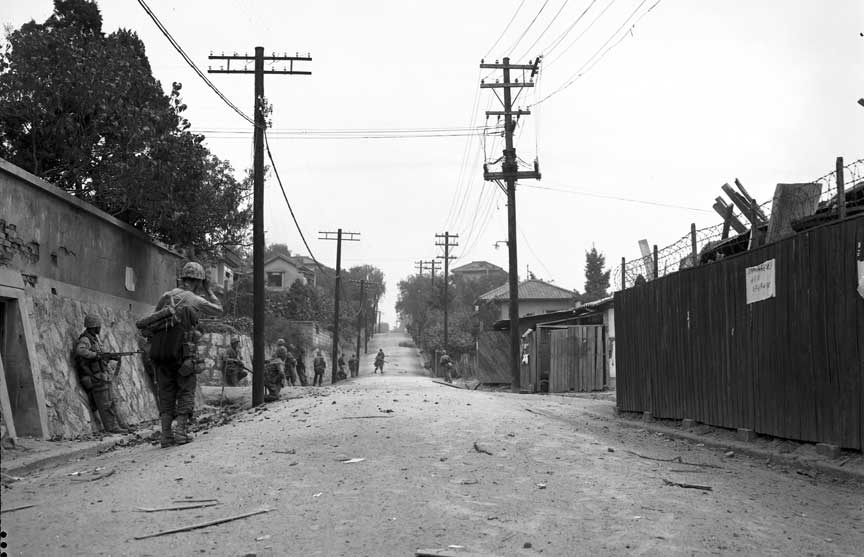The Invasion-June 25, 1950

The North Korean invaded on June 25th 1950 with 90,000 men.,Less than 50,000 South Korean troops opposed them. They advanced rapidly.
The North Korean People's Army amassed an invasion force of 90,000 men and 150 T-34 tanks. On Sunday morning, the 25th of June, the North Koreans attacked. The South Korean Army facing them consisted of a paper force of 38,000 men, but not more than one third were on duty in the early morning of the 25th. The first American to realize there was invasion in progress was Captain Joseph Darrigo, who was attached to the ROK 12th Regiment just north of Kaeson. He was awakened by artillery fire. He immediately dressed and drove into Kaesong. As he entered the city, he saw North Koreans unloading tanks from railcars at the rail station. He immediately "high-tailed it" south.
The North Koreans were invading on two main axes: the first, the Charwan-Uijonngbu-Seoul axis, a valley that invaders had been using for centuries; and the second main group, down a highway along the coast. The South Koreans were outnumbered almost 5-1, and had absolutely no heavy weapons to stop North Koreans. By Monday, it seemed clear that the North Koreans could not be stopped before they reached Seoul, and the Americans began an evacuation of dependents from the city.
The final blow to the South Korean army occurred when the bridges over the Han River, north of Seoul, were blown up too soon. Plans had called for blowing up the important bridges after the South Korean army had withdrawn across the river. Unfortunately, the bridges were blown up while the South Korean's were still crossing, thus stranding 10,000 South Koreans and eliminating any chance that they could be an effective fighting force.
 >
>